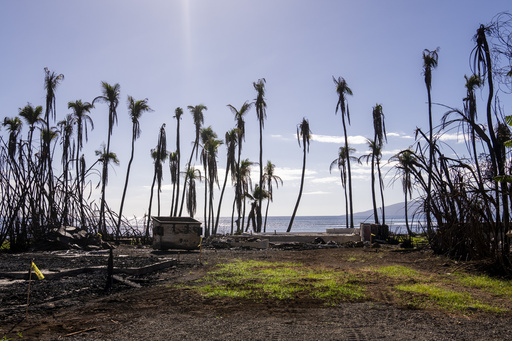HONOLULU — A report released recently reveals a troubling situation for survivors of the devastating Maui wildfires that occurred over a year ago, particularly in historic Lahaina. According to the University of Hawaii Economic Research Organization (UHERO), unemployment and poverty rates have surged, while incomes have seen a significant decline among those affected.
The research indicates that the poverty rate among those surveyed has more than doubled since the wildfires in August 2023. Nearly 20% of respondents reported a decrease in income by over half, highlighting the economic toll of the disaster. Daniela Bond-Smith, a co-author of the report and research economist at UHERO, remarked on the considerable impact reflected in the survey findings.
The report includes insights from 402 individuals who either lived, worked, or owned businesses in West Maui and Kula during the wildfires. Researchers noted that the participants generally mirrored the demographics of 12,000 local residents and 6,000 daily commuters before the fires, with a noted increase in low-income participants, although this did not substantially affect the overall conclusions drawn.
To gain a deeper understanding of the situation, researchers plan to conduct monthly surveys for the next two years. The results thus far reveal that approximately 29% of households affected by the fires now live in poverty—this statistic is more than double the rate before the fires and three times higher than the average poverty rate in Maui County.
Employment challenges have also surfaced, as fewer survivors are working, and those who are employed are facing reduced hours. Only 3.5% reported working more hours than before the fires, while the unemployment rate drastically rose from 2.3% to 14.2%. This change is especially notable in the tourism sector, Maui’s main source of employment, where less than half of those who held full-time positions remain employed, with over 20% either unemployed, retired, or not actively seeking work.
A contributing factor to this situation, according to Trey Gordner, a data scientist at UHERO, is the current number of visitors to Maui, which remains significantly lower than pre-fire levels. In terms of housing, the report highlights that nine out of ten respondents lost their homes in the wildfires. Survivors are now paying higher rents for smaller living spaces, combined with decreased income, creating additional financial strain.
A pressing issue arises as about one-third of those currently residing outside West Maui express intentions to return within the next year. However, only 700 new temporary housing units are being constructed with funding sourced from the state, local government, and nonprofit organizations, which raises concerns about the feasibility of such a return.
Maui Mayor Richard Bissen has put forward a proposal aimed at increasing West Maui’s housing supply by converting around 2,200 short-term vacation rentals into long-term rentals; however, this measure is still undergoing evaluation.
Historically, information concerning fire survivors was limited, primarily focusing on those who lost their homes or being included in larger statistical summaries for all of Maui County. Gordner emphasized the necessity of examining the circumstances of those who worked and owned businesses in the affected areas to accurately gauge the disaster’s impact and identify shortcomings in governmental and nonprofit support systems.
The survey was made accessible in six different languages—English, Spanish, Tagalog, Ilocano, Tongan, and Vietnamese—with help from various government agencies and nonprofit organizations who assisted in recruiting participants. Respondents received a $20 gift card for their first survey completion and a $10 gift card for each subsequent monthly survey.


